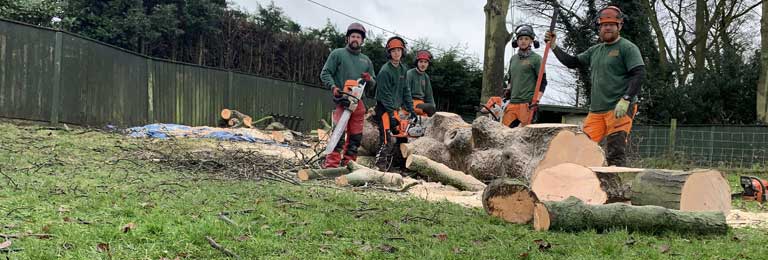ICS Tree Services, West Yorkshire tree surgeon team, provide tree services for a number of…
Funky Fungi!
We found this fabulous Funky Fungi! on dead wood at our yard this week.

Called Coral Spot because after affected branches die they develop pinhead-sized coral-pink fungal pustules, is a disease caused by the fungus Nectria cinnabarina. It causes die-back of branches of woody plants, but the causal fungus is a weak pathogen and its presence often indicates that the plant also has other problems. Among broadleaf trees and shrubs, Acer, Aesculus (horse chestnut), Carpinus (hornbeam), Fagus (beech), Juglans (walnut) and Tilia (lime) are among the more susceptible to attack but it is rarely found on conifers. The small coral-pink fungal pustules can be seen at any time of year.
The causal fungus is very commonly found growing as a saprophyte (a term describing a fungus that feeds on dead organic material) on dead wood, especially old hazel peasticks. Spores from the pink pustules on the bark are dispersed in rain splash and wind-blown rain.
Spores can infect trees in a number of ways:
- By colonising dead branch stubs, areas of dead bark or young tissues killed by spring frost
- Through lenticels (air pores) in living bark if the tree is stressed for other reasons
Although dead wood is colonised initially the fungus can then move on into living wood to cause die-back. After death, the fungus grows out of the dead bark to form the characteristic small pink pustules that produce the spores.
Our funky fungi week got better and better – then we found out about this:

It’s called Lemon Disco!
Real name Bisporella Citrina, it’s a small yellow growth that thrives on very wet wood. The discs are flat on the surface of the wood, with no gills.
If you have funny looking fungi (or any fungi at all that you’re worried about on your trees), call Ian @ICS for advice on 07782251881 or email him at ian@ic-s.org.uk




